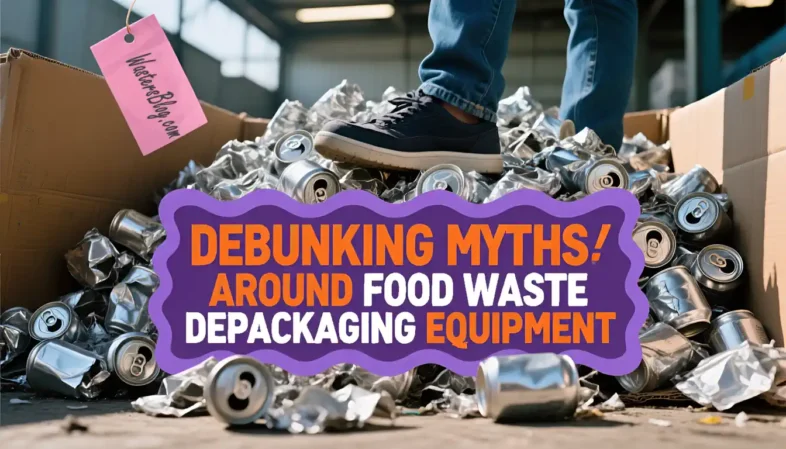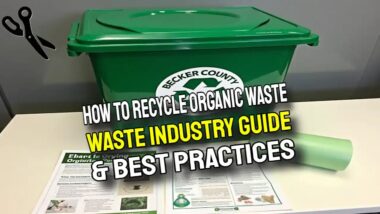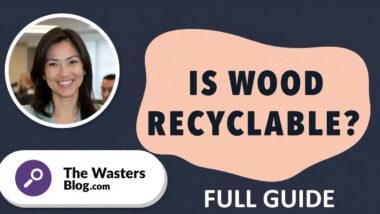There are misconceptions regarding food waste depackaging equipment, such as the claims that it is not required for sustainable food management, that it is too costly, or that it is inefficient at handling mixed trash.
Depackaging technology, on the other hand, effectively separates food from packaging, producing recyclable or reused materials from the packaging and valuable organic pulp from the food waste. This procedure is essential for lowering landfill waste, raising recycling rates, and allowing anaerobic digestion and other processes to fully utilise the energy potential of food waste.
Key Takeaways – Food Waste Depackaging Equipment
- Modern food waste depackers can process mixed waste streams with separation efficiency rates of up to 99%, making it significantly more effective than manual separation methods.
- Contrary to popular belief, properly processed organic material from the best depackaging systems meets strict quality standards for anaerobic digestion and composting applications.
- Food waste depackaging systems typically achieve ROI within 2-5 years through tipping fees, commodity sales, and operational savings.
- These systems come in various sizes to fit different facility footprints, from compact units processing 1-2 tons per hour to industrial systems handling 15+ tonnes hourly.
- Technological advances have significantly reduced maintenance requirements and operational complexity compared to earlier-generation systems.
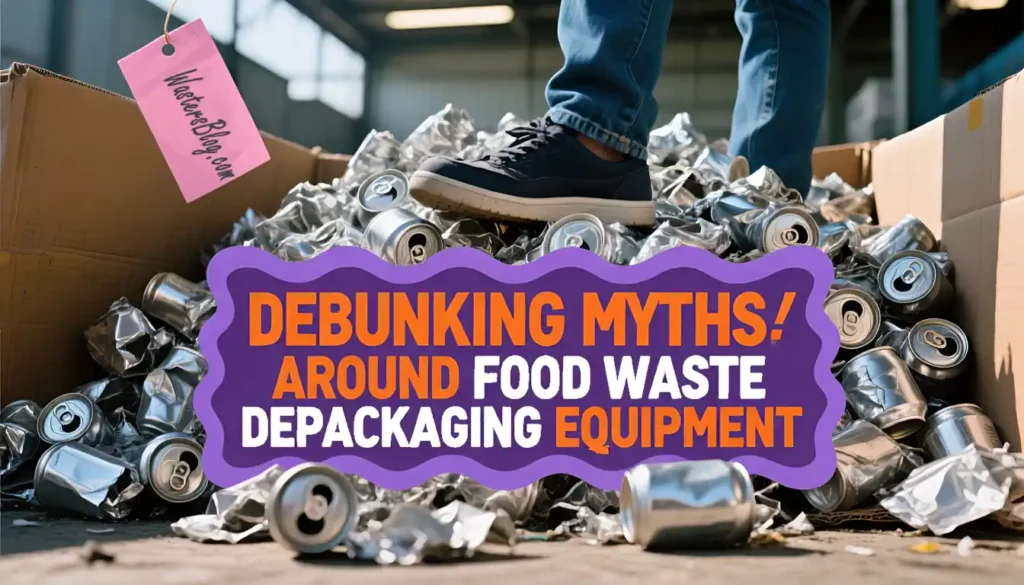
Food waste represents a massive untapped resource in our waste streams.
When packaged food products expire or become unsellable, they traditionally end up in landfills, where they generate harmful methane emissions.
But what if we could efficiently separate those organics from their packaging and transform what was once considered waste into valuable resources?
The answer lies in food waste depackaging equipment, yet misconceptions about this technology continue to hinder its widespread adoption. Let's separate fact from fiction and explore how these systems are transforming the waste management landscape.
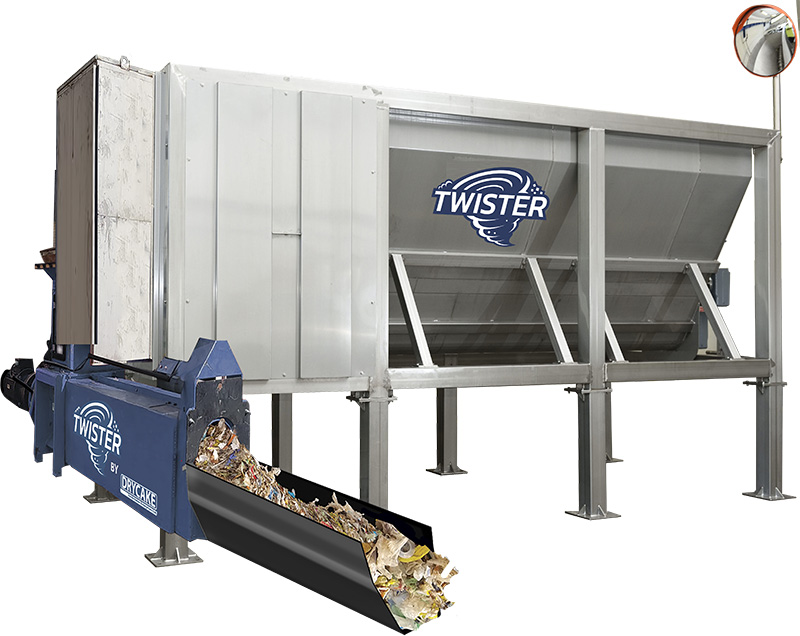
“Food Depackaging: The Systems | BioCycle” from www.biocycle.net and used with no modifications.
The Real Truth About Food Waste Depackaging Equipment
Depackaging equipment represents specialised machinery designed to separate food and organic materials from their packaging.
These systems can process everything from expired supermarket products to industrial food manufacturing waste, effectively diverting organics from landfills while recovering valuable packaging materials for recycling.
The technology has evolved significantly over the past decade, with today's systems achieving separation rates that would have been impossible just a few years ago.
Why Depackaging Food Waste Is a Growing Recycling Problem
The food industry generates enormous volumes of packaged organic waste. Supermarkets alone discard approximately 43 billion pounds of food annually in the United States, much of it still in packaging.
Food manufacturers face similar challenges with off-spec products and production line rejects.
These materials create significant disposal costs and environmental impacts when landfilled. Additionally, regulatory pressure is increasing globally, with many jurisdictions implementing organic waste bans and diversion requirements that specifically target packaged food waste.
This evolving landscape has created an urgent need for effective depackaging solutions. As tipping fees rise and disposal options diminish, businesses are increasingly seeking alternatives that can help them comply with regulations while potentially generating new value streams from what was previously considered waste.
Learn more about what happens to food waste in landfills and how it impacts the environment.
How Depackaging Separates Food from Packaging
- Mechanical separation: Utilising paddles, hammers, or similar mechanisms to break open packaging and release organic contents
- Hydraulic processes: Some systems employ water-based separation to float organics away from packaging materials
- Screening systems: Multi-stage screens filter materials by size to ensure clean separation
- Optical sorting: Advanced systems incorporate sensors to identify and separate different material types
- Density separation: Techniques that leverage the different weights of organics versus packaging
The most effective depackaging systems typically combine several of these approaches to maximise separation efficiency.
Modern equipment can now process mixed loads of packaged products without requiring pre-sorting, significantly reducing labour costs while increasing throughput. The separated organic fraction then becomes available for anaerobic digestion, composting, or other beneficial uses, while packaging materials can often be recovered for recycling.
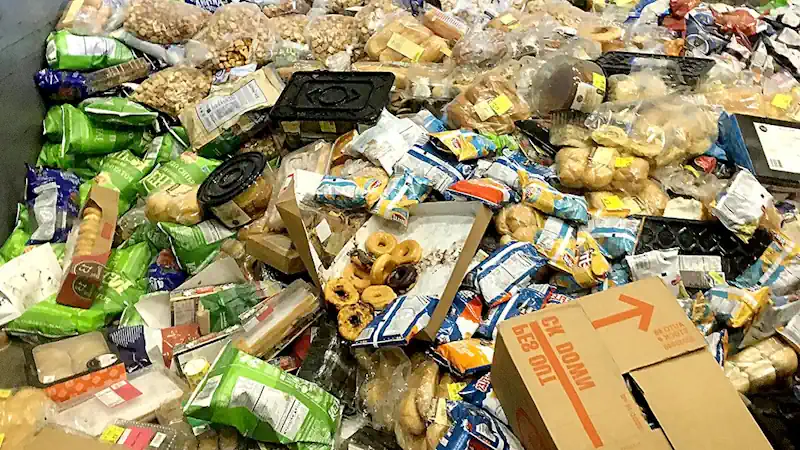
“Food Depackaging Systems | BioCycle” from www.biocycle.net and used with no modifications.
Myth 1: Depackaging Equipment Can't Handle Mixed Waste Streams
One of the most persistent myths about depackaging equipment is that it can only effectively process single-type packaging streams. This misconception stems from early-generation machines that struggled with mixed materials.
Today's advanced systems, however, can handle diverse packaging types simultaneously – from plastic bottles and aluminium cans to cardboard boxes, multi-layer packaging, and even glass containers.
This capability eliminates the need for costly pre-sorting and enables facilities to process waste streams exactly as they arrive. For more insights, explore how waste management practices have evolved to accommodate such advancements.
Types of Packaging Successfully Processed
Today's depackaging systems can effectively process an impressive range of packaging materials. Plastic bottles, jars, and containers are easily separated through mechanical action. Metal cans and aluminium packaging respond well to the impact forces in the separation chamber, with the metallic materials typically being directed to recycling streams.
Paper and cardboard packaging saturated with food residue can be successfully pulped with specialised paddle configurations.
Even challenging materials like multi-layer packaging (such as TetraPak containers) and laminated films can be processed by advanced systems, though these may require additional screening stages.
Glass containers present unique challenges but are still manageable for modern equipment.
While glass inevitably breaks during processing, properly designed screening systems can successfully separate glass fragments from the organic stream. Some facilities choose to pre-sort glass before depackaging in specialised equipment to maximise the recyclability of this material.
Case Study: Multi-Material Processing Success
“After implementing our industrial-scale depackaging system, we've been able to process over 15 tons of mixed expired products daily that previously went to landfill. The system handles everything from plastic yogurt containers to tins and cans and flexible plastic films in a single stream, with contamination rates consistently below 1%.
The recovered organics now supply our on-site anaerobic digester, while the separated packaging components generate additional revenue through recycling channels.” – Operations Director, Midwest Food Waste Recovery Facility
This real-world example demonstrates how modern depackaging technology excels at handling heterogeneous waste streams.
The facility mentioned above processes expired supermarket products alongside food manufacturing waste without requiring pre-sorting, achieving both operational efficiency and exceptional separation quality.
For more insights on this topic, check out how myths about food waste are being debunked.

“organics recycling …” from wastemanagementreview.com.au and used with no modifications.
Myth 2: Contamination Rates Make Recovered Organics Unusable
Another common misconception is that the organic material recovered from depackaging systems contains too much contamination to be useful in downstream applications.
This myth originated from experiences with older, less efficient systems that could indeed leave concerning levels of packaging fragments in the organic stream.
Modern equipment, however, consistently achieves contamination rates below 1% by weight, with leading systems reaching as low as 0.1-0.3%. These purity levels easily meet the acceptance criteria for anaerobic digestion facilities and commercial composting operations.
Actual Contamination Percentages in Modern Systems
The most advanced depackaging systems utilise multi-stage separation processes that progressively reduce contamination levels. Primary separation achieves the initial breakage of packaging and release of organics.
Secondary processing then refines this separation through additional mechanical action, often complemented by washing systems for viscous materials. The final screening stages then filter the organic fraction to remove remaining packaging fragments, with screen sizes typically ranging from 8mm down to as small as 2mm depending on the intended end use of the material.
This tiered approach consistently produces organic outputs with visible contamination levels below 0.5% and often achieves the 0.1-0.3% range noted by leading equipment manufacturers.
These results have been independently verified through testing by waste characterisation laboratories and end users like biogas plants, confirming that modern systems can produce clean organic fractions suitable for sensitive applications.
Quality Standards for Biogas and Composting Applications
Anaerobic digestion facilities typically require incoming organic material to contain less than 1% physical contaminants by weight to prevent operational issues and maintain digestate quality.
Premium composting facilities often maintain similar standards, though some operations can accommodate slightly higher contamination levels.
How Clean Separation Affects Downstream Value
The cleanliness of separated organic material directly impacts its market value and potential applications. Material with low water content and contamination below 0.5% typically commands premium prices at anaerobic digestion facilities due to its higher biogas potential and lower risk of operational problems.
For operations that utilise the recovered organics on-site, clean separation directly translates to more efficient biogas production and higher-quality soil amendments.
Myth 3: The ROI Doesn't Justify the Investment
Perhaps the most significant barrier to the adoption of depackaging technology is the perception that the return on investment doesn't justify the upfront costs. This overlooks the multiple revenue streams and cost savings these systems can generate.
A comprehensive financial analysis typically reveals that modern depackaging systems achieve payback periods of 2-5 years, depending on waste volumes and local market conditions, with many facilities reporting even faster returns.
Federal Recycling Solutions has documented numerous case studies where their customers achieved ROI in under 24 months through a combination of avoided disposal fees, new revenue streams, and operational efficiencies.
Footprint Requirements for Different System Sizes
Today's depackaging systems come in a range of sizes to accommodate different space constraints and processing needs. Small-scale systems processing 1-2 tons per hour typically require only 500-800 square feet of floor space, including staging areas for incoming material and separated outputs.
Mid-sized systems handling 3-5 tons hourly generally need 800-1,200 square feet. Even large industrial systems processing 10+ tons per hour can often be accommodated in under 2,000 square feet through vertical configuration and efficient layout design.
Equipment manufacturers have prioritised footprint efficiency in recent designs, recognising that many potential users operate in space-constrained environments. This has led to more vertical layouts, integrated screening systems, and streamlined material handling components. Some manufacturers now offer complete depackaging lines that fit within standard shipping containers for rapid deployment in tight spaces.
Modular Options for Growing Operations
For organisations concerned about future capacity needs, modular depackaging systems offer an attractive solution. These systems allow for staged implementation, beginning with core separation capabilities and adding capacity or specialised processing modules as volumes increase. This approach minimises initial space requirements while preserving expansion capabilities. Modular designs also facilitate equipment mobility, allowing systems to be relocated as facility configurations change or as processing needs evolve across multiple locations.
Another advantage of modular systems is the ability to customise configurations for specific waste streams. Operations handling primarily liquid products can optimise for hydraulic separation, while those processing mostly dry goods can emphasise mechanical separation components. This flexibility ensures that precious facility space is dedicated only to the specific processing capabilities required for the actual waste stream.
Myth 5: Operation and Maintenance Are Too Complex
A persistent misconception holds that depackaging systems require specialised technical expertise and extensive maintenance that many facilities cannot support.
Earlier generation equipment did indeed present operational challenges, but modern systems have been engineered specifically to minimise complexity and maintenance requirements. Today's leading systems emphasise operator-friendly interfaces, predictive maintenance features, and robust construction that withstands the demanding environment of waste processing.
Daily Operational Requirements
Most current depackaging systems require minimal operator intervention during normal processing. A typical operational day involves basic startup procedures, periodic monitoring of material flow and separation quality, and end-of-shift cleanup protocols.
These functions can generally be handled by existing facility personnel with minimal additional training. Many systems now feature automated feed mechanisms that regulate input rates to optimise separation efficiency, reducing the need for continuous operator adjustment.
Some advanced systems even incorporate self-adjusting parameters that automatically optimise processing conditions based on the characteristics of the incoming waste stream.
Maintenance Schedules and Costs
Modern depackaging systems typically require scheduled maintenance at 500-1,000 operating hour intervals, with major service points at 2,500-3,000 hours. Routine maintenance includes inspection and replacement of wear components like screens and impact elements, lubrication of mechanical systems, and cleaning of sensors and control components.
These activities generally require 2-4 hours of downtime and can be scheduled during non-production periods to minimise operational impact.
For those interested in broader waste management solutions, exploring landfill gas-to-energy solutions could provide additional insights into efficient waste handling strategies.
Operator Training Requirements
Training requirements for depackaging system operators have decreased significantly as equipment interfaces have become more intuitive. Most manufacturers now provide comprehensive initial training programs lasting 2-3 days, covering system operation, troubleshooting, and basic maintenance procedures.
This training is typically sufficient to enable existing staff to operate the equipment effectively without requiring specialised technical backgrounds. Refresher training and advanced optimisation techniques are often available through remote sessions, minimising ongoing training costs.
The learning curve for new operators has been substantially reduced through the implementation of touchscreen interfaces with graphical controls, step-by-step operational guides, and built-in troubleshooting assistance. These user-friendly features ensure that even facilities with high staff turnover can maintain consistent operational efficiency.
Several equipment providers also offer 24/7 support hotlines for immediate assistance with any operational questions or challenges. For a broader understanding of waste management, you can explore the best practices guide.
Myth 6: All Depackaging Equipment Performs Equally
A dangerous oversimplification in the market suggests that all depackaging systems deliver similar results, leading some buyers to focus exclusively on purchase price.
In reality, significant performance variations exist between different technologies and manufacturers, with important implications for operational efficiency, output quality, and ultimate ROI.
Understanding these differences is crucial for selecting equipment that will meet specific processing needs and financial objectives. For more insights into waste management, check out this best practices guide.
Energy Consumption Variations
Power requirements represent another significant differentiator between systems. Energy-efficient designs typically consume 25-40 kWh per ton processed, while less optimised equipment may require 60+ kWh per ton.
This energy efficiency gap creates substantial operational cost differences over the equipment lifecycle. Variable frequency drives, optimised motor sizing, and intelligent power management features contribute to lower energy consumption in premium systems.
Some manufacturers now include energy consumption metrics in their performance guarantees, providing confidence in projected operating costs.
How to Choose the Right Depackaging System for Your Business
Selecting the optimal depackaging solution requires careful evaluation of both operational needs and business objectives. This decision impacts not only immediate waste management capabilities but also long-term operational flexibility and financial performance.
A systematic assessment approach helps ensure that the selected equipment aligns with current requirements while accommodating future growth and changing waste streams.
The selection process should begin with a detailed waste stream characterisation to identify the specific packaging types and organic materials that will be processed.
This baseline information establishes the performance requirements for the equipment and highlights any challenging materials that may require special handling.
Equipment trials with representative waste samples provide the most reliable prediction of actual performance and should be requested whenever possible.
Match Capacity to Your Waste Stream
Right-sizing depackaging equipment is critical for optimising both capital investment and operating efficiency. Undersized systems create processing bottlenecks and may force compromises in separation quality to maintain throughput. Oversized equipment represents unnecessary capital expenditure and may operate below optimal efficiency when processing smaller volumes.
The ideal approach balances current processing needs with anticipated growth, typically selecting a system with 20-30% excess capacity to accommodate volume fluctuations and future expansion. Modular systems that can scale with business growth often provide the most cost-effective long-term solution, particularly for operations with uncertain future volumes.
Consider Your End Markets
The intended destination for recovered organics significantly influences equipment selection. If the material will supply anaerobic digestion systems, equipment with excellent liquid-solid separation and very low contamination rates should be prioritised. For composting applications, slightly higher contamination levels may be acceptable, but consistent particle size becomes more important. If the recovered organics will be used for animal feed production, specialised systems with enhanced foreign material detection may be required to meet stringent safety standards. Understanding these downstream requirements prevents costly retrofits or process adjustments after installation.
Evaluate Total Cost of Ownership
Purchase price represents only a fraction of the lifetime cost of depackaging equipment. A comprehensive total cost of ownership analysis should include energy consumption, water usage, maintenance requirements, wear part replacement intervals, and anticipated operational labour.
Higher-quality systems typically command premium prices but often deliver lower lifetime costs through reduced energy consumption, longer component life, and less frequent maintenance requirements.
The cost analysis should also consider performance factors that impact revenue potential, such as organic recovery rates, contamination levels, and system uptime. Equipment that recovers an additional 5% of organic material or achieves 0.2% lower contamination rates can generate substantial additional revenue that quickly offsets higher initial costs.
Similarly, systems with 98% uptime versus 92% uptime effectively provide significantly more annual processing capacity without additional capital investment. For further understanding, you can explore best practices in waste management.
Questions to Ask Equipment Vendors
When evaluating depackaging equipment suppliers, specific inquiries can reveal crucial information about system capabilities and support quality.
Request detailed performance data for waste streams similar to your specific materials, including throughput rates, contamination percentages, and organic recovery efficiencies.
Ask for references from existing customers processing similar materials and arrange site visits whenever possible to observe systems in actual operation. Inquire about warranty terms, availability of spare parts, response times for service requests, and options for remote monitoring and support. The most reputable manufacturers willingly provide this information and encourage direct comparison with competing systems.
Additionally, discuss the commissioning process and ongoing support provisions in detail. The most successful implementations typically include comprehensive operator training, supervised production startup, and follow-up optimization visits. Established manufacturers maintain field service teams that can respond quickly to operational issues and provide periodic system assessments to maintain peak performance. These support capabilities often distinguish premium equipment providers from lower-cost alternatives with limited post-sale assistance.
The Future of Food Waste Depackaging
The depackaging equipment sector continues to evolve rapidly, with technological advancements enhancing separation efficiency while reducing operational complexity. These innovations are expanding the range of materials that can be effectively processed and improving the economics of organic recovery across diverse waste streams.
Several emerging trends are likely to shape the next generation of depackaging solutions, creating new opportunities for waste generators and processors alike. For more insight into the importance of managing food waste, explore what happens to food waste in landfills.
One particularly promising development involves the integration of artificial intelligence and machine learning systems to optimise separation processes in real-time. These technologies enable equipment to recognise specific packaging types and automatically adjust processing parameters to maintain optimal separation efficiency.
Early implementations of these adaptive systems have demonstrated significant improvements in both throughput rates and separation quality, particularly when processing heterogeneous waste streams.
Regulatory Trends Driving Adoption and Avoidance of Microplastic Formation
Regulatory frameworks increasingly target both organic waste diversion and microplastic contamination, creating dual pressures that depackaging systems must address. Emerging regulations in Europe and parts of North America specifically limit acceptable contamination levels in processed organics, with particular focus on microplastics below 2mm in size.
These requirements are driving equipment innovations that achieve cleaner separation while minimising fragmentation of plastic packaging materials. Systems that can document contamination levels through automated monitoring and sampling are gaining an advantage in this evolving regulatory landscape. For more information on waste management, you can refer to this waste management guide.
SRF and WDF Integration with Renewable Energy Systems
Advanced depackaging facilities are increasingly integrating Solid Recovered Fuel (SRF) and Waste Derived Fuel (WDF) production capabilities to maximise value recovery from non-recyclable packaging fractions.
These secondary processing systems convert materials that would otherwise be landfilled into engineered fuels for industrial applications, creating additional revenue streams while further reducing disposal volumes. This approach aligns with circular economy principles by extracting maximum value from all components of the waste stream and minimising environmental impact through near-complete diversion from landfill.
Frequently Asked Questions on the Subject of Food Waste Depackaging Equipment
As depackaging technology becomes more widely adopted, potential users naturally have questions about implementation requirements, operational considerations, and expected outcomes. Addressing these common inquiries helps organisations make informed decisions about whether depackaging solutions align with their specific waste management challenges and business objectives.
The following responses address the most frequently asked questions from food manufacturers, distributors, waste management companies, and municipal programs considering depackaging equipment investments. These insights are based on actual implementation experiences across diverse operational environments.
What types of packaging can the depackaging equipment process?
Modern depackaging systems can effectively process most common food packaging materials, including plastic containers, bottles, and films; metal cans and aluminium packaging; paper and cardboard containers; multi-layer packaging like Tetra Pak; and even glass bottles and jars.
The most advanced systems handle these diverse materials simultaneously without requiring pre-sorting, though some challenging materials like thick-walled HDPE containers may benefit from separate processing settings.
Materials with extremely high tensile strength, like certain reinforced plastic films, may require specialised cutting mechanisms or pre-processing, but these represent a small percentage of typical food packaging waste streams.
How much does a food waste depackaging system cost?
Equipment costs vary significantly based on processing capacity, separation technology, and included features.
Small systems processing 1-2 tons per hour typically range from $150,000 to $300,000, while mid-range industrial systems handling 3-5 tons hourly generally cost between $300,000 and $650,000.
High-capacity systems processing 10+ tons per hour can range from $750,000 to over $1.5 million, depending on included features and separation quality requirements.
These figures represent equipment costs only and do not include site preparation, utility connections, or material handling systems that may be required for complete installation.
Beyond the initial purchase price, buyers should budget for installation costs (typically 10-15% of equipment price), operator training, and potential facility modifications to accommodate material flow.
Can depackaging equipment handle expired food products?
Depackaging systems excel at processing expired or off-spec food products, efficiently separating the organic contents from packaging materials regardless of product age or condition. These systems routinely process products well beyond their expiration dates without performance issues.
The mechanical separation process is unaffected by product deterioration that might challenge manual handling approaches. In fact, some types of expired products actually process more efficiently as natural degradation has already begun breaking down the structure of the food materials.
What happens to the separated packaging material?
The packaging fraction separated during depackaging varies in composition depending on the input waste stream, but typically contains recoverable materials with potential value. Clean, segregated packaging components like metals and certain plastics can be directed to traditional recycling channels.
Mixed or contaminated packaging fractions may be suitable for waste-to-energy applications or conversion to Solid Recovered Fuel (SRF) for industrial use. The specific handling approach depends on local recycling infrastructure, material composition, and applicable regulations.
- Metals (aluminium, steel): Typically recycled through conventional channels
- Clean plastics (PET, HDPE): Often suitable for mechanical recycling
- Paper and cardboard: May be recyclable if sufficiently clean
- Multi-layer materials: Generally directed to energy recovery
- Mixed plastics: Often processed into SRF for industrial fuel applications
Advanced facilities may incorporate secondary sorting systems to further separate packaging materials by type, maximising recovery value. The percentage of packaging material ultimately diverted from landfill typically ranges from 60-90% depending on local recycling capabilities and market conditions.
It's worth noting that even when direct recycling isn't feasible, the volume reduction achieved through depackaging significantly reduces disposal costs compared to landfilling the original packaged waste.
This volume reduction benefit exists regardless of the ultimate destination of the packaging fraction.


